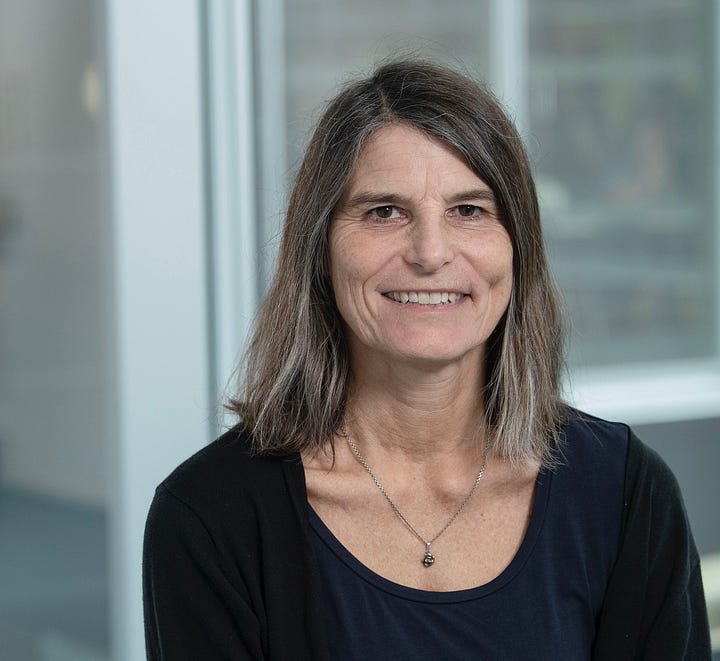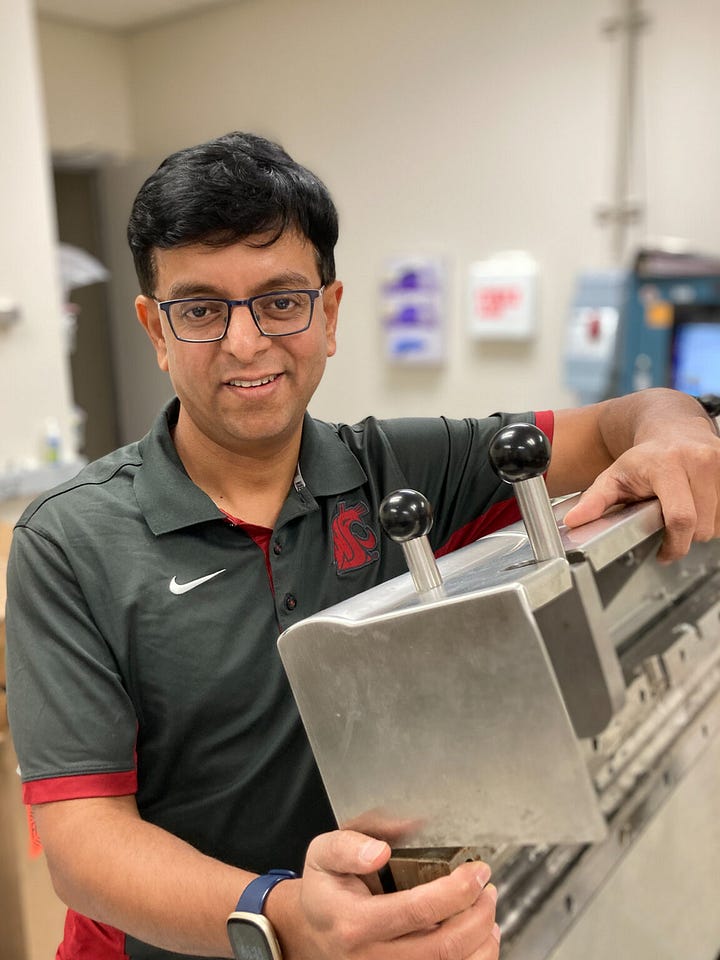Four scientific leaders bring the world’s best and brightest together to reimagine meat
What the new Gordon Research Conference means for our field




While the field of alternative protein science has progressed immensely in recent years, to enable the innovation and discovery necessary to unlock the next phase of progress toward a sustainable food system, we need effective new forums for open and rigorous scientific inquiry.
One well-known forum in the scientific community is the Gordon Research Conference (GRC), which is a highly-selective non-profit focusing on vital, emerging areas of science that generate considerable interest across the international scientific community. Given that alternative proteins are on the frontiers of science, this topic is a match made in heaven, but there has never been a GRC focused on alternative proteins—until now.
Last fall, Dr. David Kaplan of Tufts University, Dr. Mette Lübeck of Aalborg University, Dr. Amy Rowat of the University of California, Los Angeles, and Dr. Girish Ganjyal of Washington State University took on that challenge and put forth a successful proposal for a new Gordon Research Conference focused on plant-based, cultivated, and fermentation technologies, ushering in a new era of collaboration for this field.
These four leaders represent a diversity of scientific expertise across the alternative protein spectrum, covering foundational disciplines in biotechnology, tissue engineering, food science and processing, enzymes and microbial discovery, and more. What they share is a vision for our future food system and the role academia plays in bringing that vision to fruition:
“My dream for our food system is one that’s kinder to our climate and environment. For that to work, taste and scale are key. We need scientists to make these technologies tasty and accessible, not only in industrialized countries but to communities around the globe.”
- Mette Lübeck, 2026 co-chair
This challenge invites us to reimagine our global food supply by employing timely new strategies.
“This future for foods is not an option, but a necessity.”
- Dr. David Kaplan, 2026 chair
From January 25-30, 2026, and every two years thereafter, a GRC focused on “Foods of the Future: Science and Engineering Approaches” will assemble hundreds of brilliant minds across the global research community to talk about the latest developments in alternative protein science with their peers. This isn’t just another conference—it’s an opportunity to break down traditional research silos, spark interdisciplinary dialogue, and push the boundaries of food science as we understand it today.
“I am excited to participate in this inaugural future foods GRC as this technology is key to our future – from environmental, animal, and human health perspectives. Innovative approaches to solving long-term food needs are critical, and the opportunity to help bring the scientific community together to discuss emerging trends and future opportunities is absolutely essential to progress, community-building, and support in this field.”
- Dr. David Kaplan, 2026 chair
This is a significant milestone for the alternative protein field. We view the establishment of this conference not only as a mechanism for expanding and connecting the academic community, but as a powerful demonstration of the central importance of alternative proteins and the tremendous potential that remains.
So, what makes this GRC so special?
#1: Building a sense of camaraderie and community
Many researchers consider GRCs the most impactful and formative experiences of their careers. The secret sauce? An immersive, intimate environment where people can focus on science.
“Driving future foods research forward demands rigorous scientific discussions with folks across fields. There are plenty of meetings that highlight industry progress; this GRC will provide a rare and essential space for academic researchers to deeply engage with data and research.”
- Dr. Amy Rowat, 2026 vice chair
Over five days, the GRC will create a unique space for in-depth knowledge-sharing and connection — serving as an invaluable convening for academics to share their most cutting-edge, unpublished work, learn from their colleagues, and build relationships that extend beyond the duration of the conference.
Through presentations from distinguished speakers, poster sessions that encourage participation from researchers at all career stages, and ample opportunities for informal discussion during leisure time and shared meals, the gathering aims to foster lasting professional connections and friendships and create an enduring network of support for alternative protein innovators.
#2: Advancing critical, interdisciplinary scientific dialogue
Intellectual diversity is necessary to spur genuine creativity, innovation, and technological surprise, all of which are required to achieve our bold goal of building a sustainable and resilient protein supply.
Luckily, the Foods of the Future GRC is interdisciplinary by design. This convening is intentionally crafted to bring together many different backgrounds in the same room to tackle priority topics across the scientific community, including affordable processing techniques to turn microbes into meat, exploring the structure and texture of meat analogues, and ensuring accessibility, sustainability, and equity in the agricultural transition. The topics are carefully curated to expand further than academic musings and generate momentum beyond the conference for building a future where nutritious food is accessible to communities.
We expect this gathering will help define key scientific questions, prioritize future research directions, and discover major synergies across production platforms that might empower researchers to think about their work in meaningful new ways. These conferences provide an environment where emerging researchers and seasoned experts come together to solve complex food system challenges and share their most innovative ideas away from the pressure to publish.
“This GRC is very timely as many researchers from multiple disciplines are working towards similar end goals but have not been able to come together in one place to collaborate and address the complex challenges that require interdisciplinary approaches. I am beyond excited to meet and listen to experts from various disciplines come together in a room, discuss potential solutions, and develop new collaborations to address the challenges faced by society.”
- Dr. Girish Ganjyal, 2026 co-vice chair
#3: Nurturing the next generation of scientific leaders
One of the powerful aspects of this forum is that it allows junior scientists to connect with the broader research community on a much deeper level than is typically possible at larger conferences.
“Attending my first GRC as a graduate student was a transformative experience—it provided invaluable opportunities to network, exchange ideas, and build lasting scientific collaborations. I hope this GRC will offer the same for trainees, giving them a platform to present their work, engage in meaningful discussions with leaders in the field, and form connections that will drive future innovation.”
- Dr. Amy Rowat, 2026 vice chair
And that’s for good reason: early-career scientists are the future leaders of this field. To make alternative proteins a sustainable and enduring scientific movement, we need a steady stream of new leaders prepared to guide the community forward.
Within the GRC framework, there are ample opportunities for junior scientists to take leadership roles: The gathering includes “power hours” and broader discussions outside of the technical program, often run by postdoctoral researchers and students. Each GRC will feature new conference chairs and vice chairs, creating opportunities for rotating members of the academic community to step into leadership roles. Beginning in 2028, the GRC will likely include Gordon Research Seminars, which focus on supporting budding scientific leaders by providing an environment where their fresh ideas can flourish away from the formality of larger conferences.
“Students are the catalysts to keep this critical field moving forward”
- Dr. David Kaplan, 2026 chair
“Young scientists are an essential part of the food system transformation: they’re much more willing to try new things, much more creative and openminded, and we want to empower them to feel that they’re a part of our movement toward something better.”
- Dr. Mette Lübeck, 2026 co-chair
Though many sizable challenges remain, we take this GRC as a reason for optimism. The Foods of the Future GRC shows that meat biomimicry research is maturing into a robust field grounded in cutting-edge science and meaningful collaboration, driving innovation toward a secure food future. The 2026 gathering marks only the beginning of where our vibrant global community may lead us.









